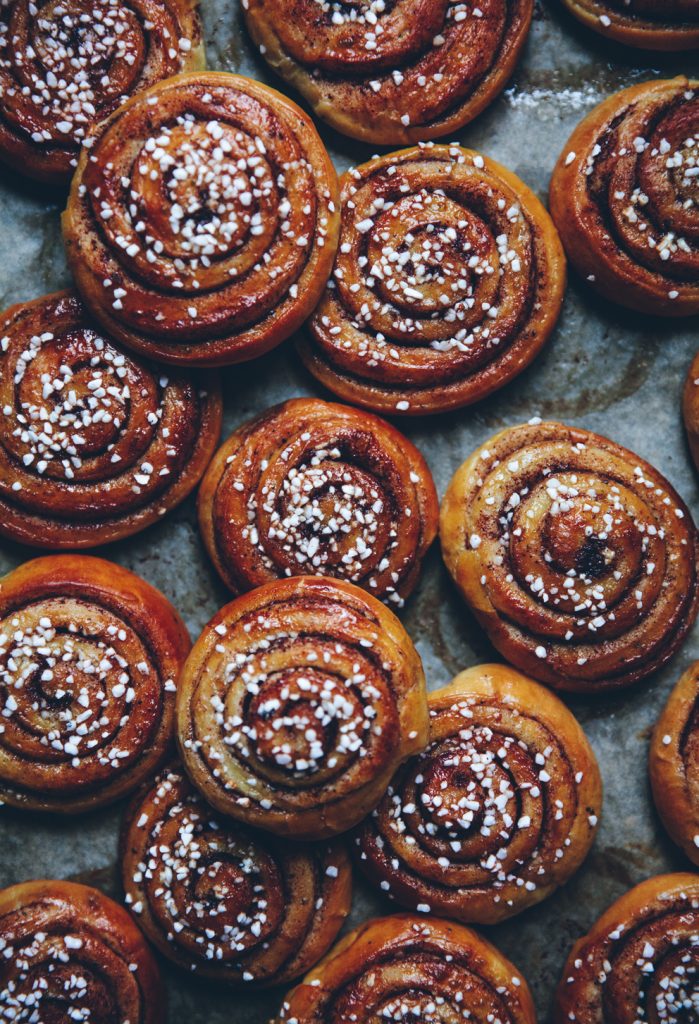A very Scandinavian Christmas
In this article, Caroline (Y13) explores the unique traditions that shape the Scandinavian festive period.

Christmas is the most prized celebration in the Nordic region, encapsulating themes of warmth, colour and light with a backdrop of ice and snow. Like most European Christmas celebrations, Scandinavian Christmas has its roots in Yule — a day-long feast that celebrates the winter solstice, and the return of light prevailing over the darkness. Yule evolved in the hands of Christianity around the 9th century, when missionaries began transforming it into the Christmas we now know. Some Nordic Christmas celebrations still use the word Yule, or ‘Jul’, ‘Jol’ or ‘Joulu’, today. For this reason, there is often an emphasis on tradition during the festivities, as well as on the idea of ‘hygge’, defined as a quality of cosiness and conviviality during the wintertime that engenders a feeling of contentment, boosting happiness and wellbeing. It derives from a sixteenth-century Norwegian term, ‘hugga’, meaning “to comfort” or “to console.” And ‘hygge’ is not limited to the cosiness of your immediate surroundings; it can be used to describe people, too! If someone is ‘hyggelig’, they are warm- hearted, amicable, and friendly – the ideal person to invite for a Scandinavian Christmas dinner! Where other parts of the world have evolved to celebrate an often heavily commercial Christmas, Scandinavia is one of the few parts of the world that holds true to the original meaning of Yule.
Christmas celebrations in Scandinavia are not limited to two or three days – instead, the festivities are spread over a full thirteen. Lucia of Syracuse (283-304 AD) is an Italian saint and martyr who inspired one of the most cherished pre-Christmas traditions, celebrated mainly in Sweden on December 13th. Lucia was a young Christian woman at a time when Christians found themselves persecuted for noncompliance with traditional Roman religious practices. Under cover of darkness, she would secretly visit Christians who hid in catacombs to protect their lives. To illuminate this dark and murky underworld, Lucia would wear a crown of candles in order to have her hands free to serve others. Nowadays, young girls in Sweden wear crowns of candles in the fashion of Saint Lucia on St Lucy’s Day. Processions are organized in homes, schools, churches, hospitals, offices and even on TV as Sweden votes for its favorite Lucia every year. It is a popular event with traditional Christmas carols, featuring the traditional Neapolitan “Santa Lucia”, a tribute song to Saint Lucy. In London, you can witness the annual Santa Lucia concert at the Swedish Christmas Church.
Saint Lucy’s Day is also marked by the tradition of preparing food and drinks for the occasion. This involves recipes such as the round Lucia bread, and the famous Lucia buns (Swedish: Lussekatt) made with saffron. Food is a key element of any Scandinavian Christmas, and delicacies such as cinnamon and cardamom buns are easy to replicate at home – you can find the recipe in another Christmas entry!
While Christmas traditions in Scandinavia vary by country, ranging from the 13 different Icelandic Santa Clauses to the Finnish Christmas sauna convention, Scandinavian Christmas is full of light, knitwear, Yule markets, and fun. Scandinavian festivities are characterised by figures such as the Yule Goat, which wreaks havoc on Nordic villages while transporting gifts, and unique traditions like ‘Julebukking’ (where costumed individuals go door to door and challenge neighbours to identify who is concealed beneath the disguise. Finland’s customs are arguably a little more unconventional than those of their neighbours, with ‘Joulu’ carrying its own distinct charm in the home country of ‘Joulupukki’, or the Finnish equivalent of Santa Claus. But regardless of differences between Nordic nations, it is undeniable that Christmas across Scandinavia epitomises the spirit of the festive season, brightening up the dark midwinter days with hope and joy.
We hope you enjoy trying out these delicious spiced Swedish cinnamon buns, with optional variations on the traditional recipe.
Scandinavian cinnamon bun recipe
Makes 16 buns.

Dough ingredients:
- 240 ml milk (whole, almond, or oat)
- 55 g unsalted butter (vegan or non-vegan), melted and cooled
- 7 g instant yeast
- 50 g caster / granulated sugar
- 400 g strong white bread flour
- 1 teaspoon freshly ground cardamom
- ½ teaspoon salt
Filling ingredients:
- 75 g unsalted butter (vegan or non-vegan) at room temperature
- 65g light brown sugar
- 1 tablespoon ground cinnamon
To finish:
- 1 beaten egg (or vegan butter) for egg wash
Instructions:
- Mix the flour, sugar, cardamom and yeast, either by hand or in a mixer, until combined.
- Add milk and melted butter to the flour mixture and mix until the dough comes together.
- Add salt and continue mixing until the dough is soft and pulls away from the sides of the bowl.
- Place the dough in a large bowl brushed with oil, and coat the dough with oil to prevent the dough from drying out.
- Cover with wrap and let it sit in a warm space to rise for 1-2 hours, or until the dough has doubled in size.
- Make the filling: In a small bowl, combine softened butter, sugar and cinnamon to make a smooth paste.
- Shape the dough once risen – on a lightly floured surface, roll out the dough into a 35 by 35 cm square.
- Spread the butter- sugar mixture onto the entire dough in a thin layer. Fold the dough into thirds, then roll into a rectangle shape. (You can find videos on how to do this if you’re unsure!)
- Facing the longer edge, cut the dough into strips approximately 2cm wide and 20m long. Twist each strip several times, and stretch it slightly as you do so.
- Take one end of the twisted strip and coil the dough around your hand twice, then over the top. Repeat this, and tuck the loose end of the strip in at the bottom.
- Arrange the cinnamon buns on a lined baking sheet, cover these and let them rest once again in a warm space for 45-60 minutes.
- Preheat the oven to 180 degrees Celsius.
- Brush the tops of the buns with egg/vegan butter wash, sprinkle them with sugar, and bake for 15-20 minutes until golden brown.
- Allow the buns to cool once removed from the oven for 5 minutes, then transfer them to a wire rack to cool completely.
- Enjoy!

